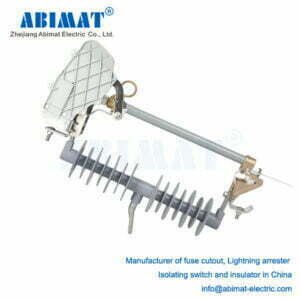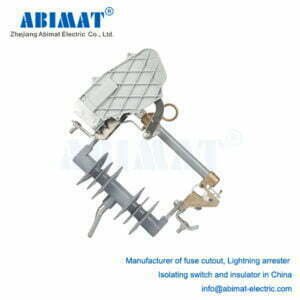- LIGHTNING ARRESTER
- ISOLATING SWITCH
- INSULATOR
Drop-out Fuse: Ensuring Reliable Overcurrent Protection
Introduction:
Drop-out fuses, also known as drop-out cutouts, are essential components in electrical distribution systems that provide reliable overcurrent protection. In this comprehensive article, we will delve into the working principles, benefits, installation procedures, and maintenance practices associated with drop-out fuses. By understanding their significance and best practices, we can ensure the uninterrupted operation of electrical infrastructure.

1. Overview of Drop-out Fuses:
Drop-out fuses are protective devices designed to interrupt current flow in the event of overcurrent conditions. They consist of a fuse assembly and a disconnect switch, combined into a single unit. The unique feature of drop-out fuses is their ability to provide a visible indication when the fuse element operates, making it easier to identify and resolve faults.
2. Working Principles:
Drop-out fuses operate based on the principle of thermal interruption. The fuse element within the fuse cutout is designed to melt when exposed to excessive current. When an overcurrent occurs, the heat generated by the current flow causes the fuse element to melt, thus creating an open circuit. The drop-out action occurs simultaneously, physically disconnecting the faulty section from the power source.
3. Benefits of Drop-out Fuses:
Drop-out fuses offer several advantages in terms of overcurrent protection and system reliability. These benefits include:
- Quick fault identification: The visible indication provided by the drop-out action helps locate and resolve faults promptly, reducing downtime.
- Easy replacement: Drop-out fuses can be easily replaced once they operate, minimizing service restoration time.
- Cost-effective solution: Drop-out fuses are a cost-effective alternative to more complex protective devices like circuit breakers, making them ideal for various applications.
4. Installation Procedures:
Proper installation of ABIMAT drop-out fuses is crucial for their reliable operation. The following considerations should be kept in mind:
- Selection of the appropriate fuse rating based on the system’s requirements.
- Adherence to installation guidelines provided by the manufacturer.
- Ensuring proper connections and adequate insulation to prevent arcing and faults.
5. Maintenance Practices:
Regular maintenance of drop-out fuses is essential to ensure their optimal performance. Key maintenance practices include:
- Periodic inspections to check for signs of wear, corrosion, or loose connections.
- Replacement of faulty or blown fuses promptly.
- Cleaning and lubrication of mechanical components to prevent sticking or malfunctioning.
Conclusion:
Drop-out fuses play a vital role in providing reliable overcurrent protection in electrical distribution systems. By understanding their working principles, benefits, and following proper installation and maintenance practices, we can ensure the continuous operation of electrical infrastructure while minimizing downtime and enhancing system reliability. The use of drop-out fuses as a cost-effective solution showcases their importance in safeguarding electrical equipment.



